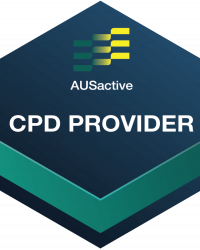Reformer Repertoire
Long Box Arm Work:
Tricep Press
Alternate Names
Pull Straps 3
Derived From
Classical Reformer: Pull Straps
Primary Element
Strength
Why for Primary?
To develop and build strength in the elbow extensor muslces or triceps
- The triceps brachii at the back or posterior aspect of the upper arm has three muscle heads or points of origin
- Medial head
- Lateral head
- Long head
To strengthen the thoracic extensor muscles or when lifting the chest up or back
- Erector spinae
- Middle and lower trapezius
To strengthens the abdominals in a prone position.
Secondary Element
Stability
Why for Secondary?
To strengthen and develop control in the abdominal muscles transversus abdominis to create pelvis and torso stability whilst in a prone position.
Tertiary Element
N/A
Why Tertiary?
N/A
Repetitions
8-10
Apparatus Setup
Suggested springs
- Number system: 1 x spring
- Colour system: 1 x red
- Resistance: light
Foot Bar down to the lowest position.
Pilates box in the ‘long box’ position with the short edge against the shoulder blocks.
Plane of Motion
Sagittal
Targeted Muscles
The thoracic extensor muscles or when lifting the chest up or back
- Iliocostalis
- Longissimus
- Spinalis – the main extensor (backward bending) muscle of the thoracic spine, located on either side of the vertebral column
- Middle and lower trapezius
- The triceps brachii at the back or posterior aspect of the upper arm has three muscle heads or points of origin
- Medial head
- Lateral head
- Long head
Warnings
This exercise may be unsuitable for clients where lying prone is contraindicated. It can be done standing holding to light hand weights, watching for pelvis stability throughout and avoiding overextending into the lumbar spine.
Execution
Lie prone on the long box facing the head rest, hands holding the straps or ropes with arms extended forward. Legs actively lifted and adducted, feet plantar flexed reaching behind the body.
Inhale to peel the sternum up off the long box into back extension, extending the elbows, reaching the hands to the hips. Exhale to control the bend of the elbows only, inhale to extend the elbow. Note the eccentric contraction of the triceps as the elbows bend.
Observations
Do a body scan of the client taking note of the following points
- Head and Neck
- Is the back of the neck long and crease free? A slight retraction of the neck with the chin tucked can help avoid straining the neck
- Shoulders
- Are the arms reaching back towards the hips, at hip height when in elbow extension?
- Is the upper arm still throughout, the only movement being bending and straightening at the elbow joint?
- Pelvis
- Are the hip bones even horizontally or is the client leaning to one side?
- Is the client about to keep a posterior tilt throughout with the pubic bone pressing into the long box? Avoiding over extending in the lumbar spine?
- Legs
- Are the legs engaged with the thigh’s lifted off the box, the lifting and lowering coming from the gluteals and hamstrings?
Learning Style Technique Cues
Auditory – word associations that connect mind and body
- Peel the chest up off the box, maintaining length through the neck.
- Say the client’s name when you’re about to interact with them
- Move into back extension at the same time as extending the arms, keeping the upper arm still through the entirely of the exercise
Visual
- Imagine a carnival ferris wheel ride. Each component of the body lifting after the other into back extension – the head, the chest and shoulders, then the reverse
- You may demonstrate a part of the movement as a visual representation for the client to see
Kinaesthetic
- Feel the lungs expanding in the rib cage creating more space as you inhale and lift up off the box
Modifications and Variations
Regress the exercise by
- Standing and creating the movements without the pull of gravity using a set of hand weights for resistance
- Reducing the repetitions and/or pace
- Reducing the spring setting to 1 x blue spring
- Working on Warm Up: Back Extension Preparation to practice the thoracic extension component
- Working on Long Box Series: T Straps
Progress the exercise by
- Increasing the repetitions and/or pace
- Increasing the range of motion
- Increasing the spring settings to 1 red spring and 1 blue spring
- Lying on a less stable or smaller surface, for example moving the Pilates box to the ‘short box’ position
- Working towards Long Box Arm Work: Pull Straps
Series and Transitions
This exercise is part of the Long Box Arm Work series which includes a range of other exercises in the progressive repertoire. The Long Box Arm Work series is known as the Pull Straps series in Classical Reformer Pilates.
Progressive repertoire
- Pull Straps
- T Straps
- Tricep Press
- Pull Ups

